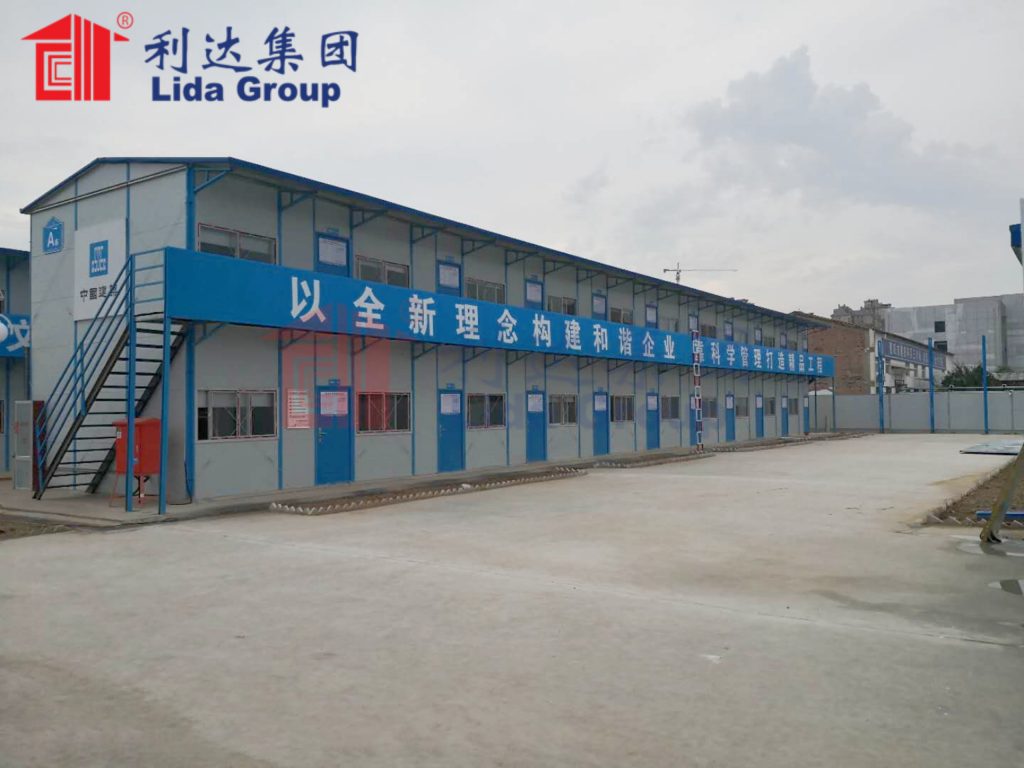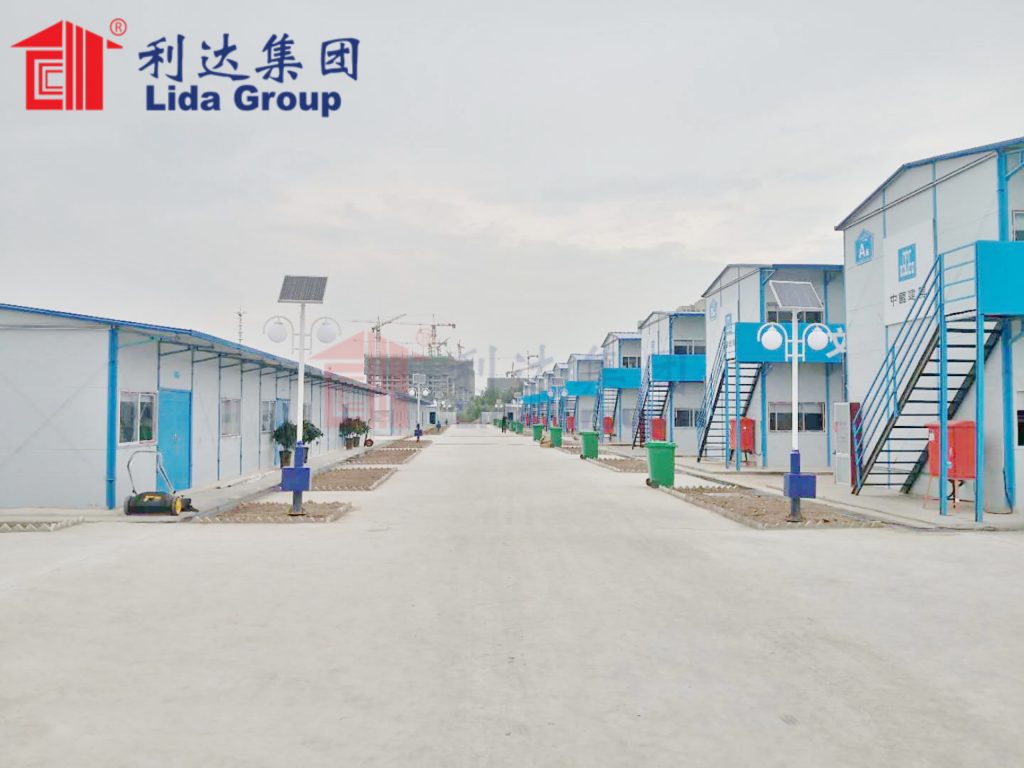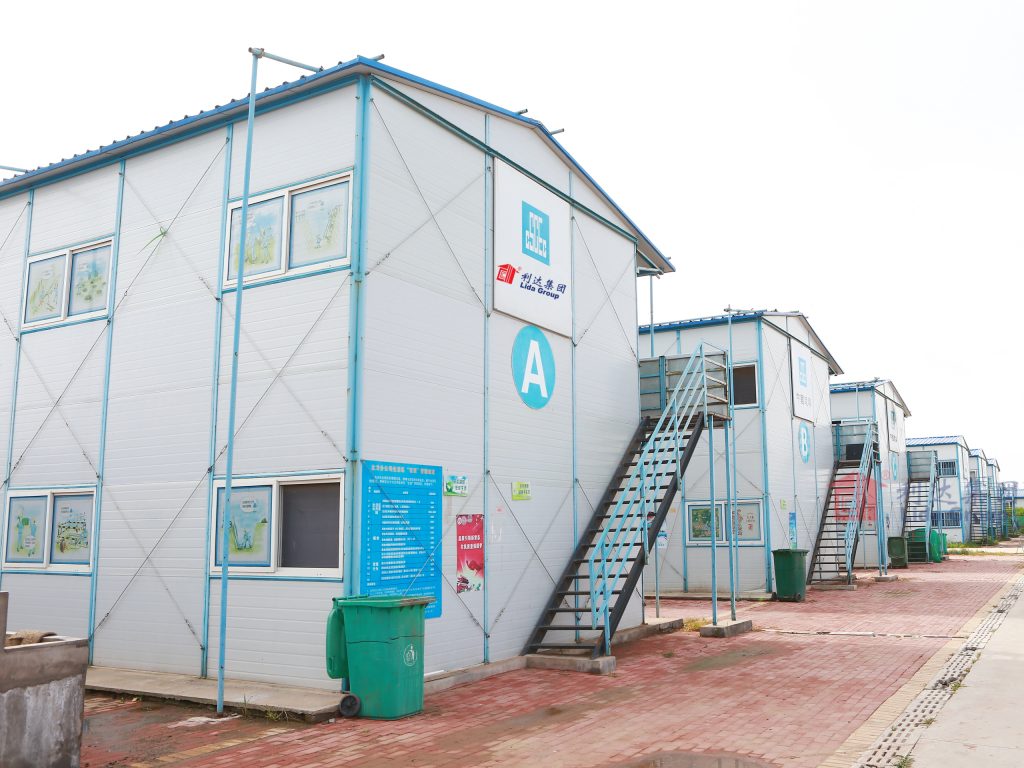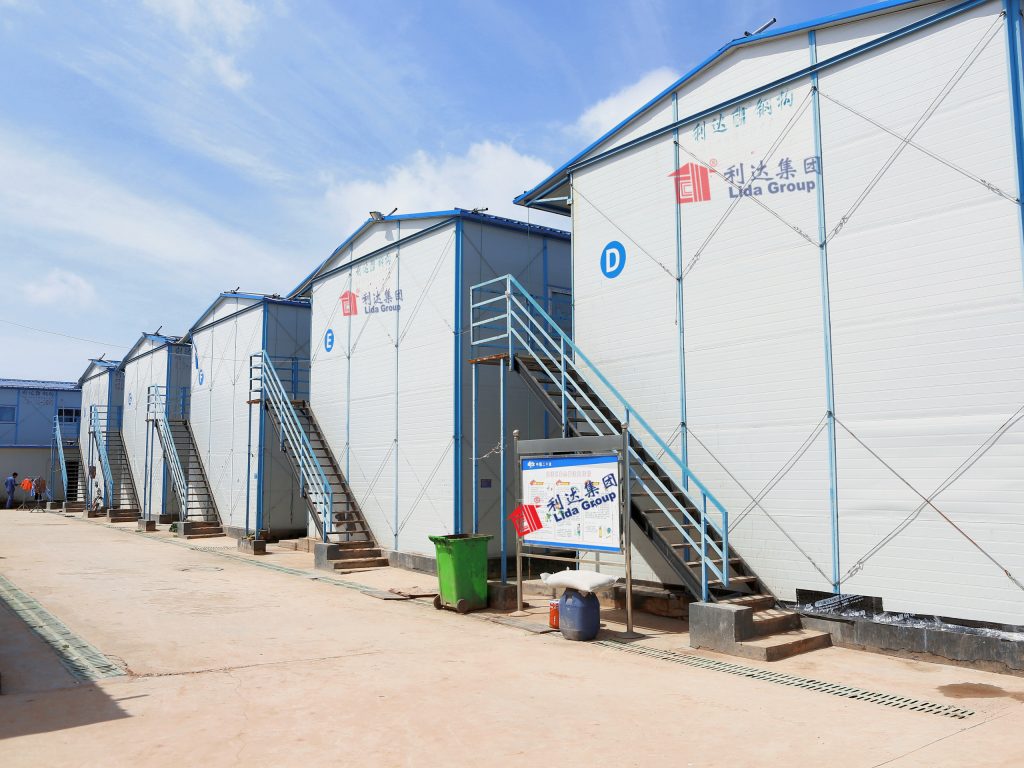Innovative Low-Cost Sandwich Panel House Designs from Lida Group Revolutionize the Temporary Prefab Building Market
2025-Oct-24 11:51:53
By Admin
1. Introduction: The Urgent Need for Evolution in Temporary Prefab Construction
Across industries spanning mining, oil & gas, and large-scale infrastructure, the demand for reliable temporary housing has long outpaced supply. Traditional construction methods—plagued by slow assembly, exorbitant costs, and vulnerability to extreme environments—have left project managers and workers compromised. Remote arctic mines, desert refineries, and disaster relief zones require structures that balance durability, mobility, and affordability, a trifecta traditional builds cannot deliver. Since 1993, Lida Group, headquartered in Weifang, Shandong, China, has positioned itself as a catalyst for change. By reimagining sandwich panel technology and modular design, the company has transformed the temporary prefab market from a niche alternative to a global benchmark. This article examines how Lida’s innovative, low-cost sandwich panel houses are reshaping industry standards.

2. Lida Group: A Legacy of Engineering Excellence in Prefab Solutions
Lida’s journey to market leadership began with steel structure expertise, evolving into container house conversions and, ultimately, integrated prefabricated systems. With over three decades of experience, the company has exported to 110+ countries, earning certifications including ISO 9001, CE, SGS, and BV—testaments to its commitment to quality. What distinguishes Lida is its ability to merge standardized production with customizability. Unlike one-size-fits-all prefab models, Lida’s engineers collaborate closely with clients to address site-specific challenges: hurricane-force winds, -40°C cold snaps, dust storms, or seismic activity. This client-centric approach has solidified its status as China’s top supplier of industrial prefab housing, with a production capacity of 3,000 sets per week and 5,000 square meters weekly for steel-structured units.
3. Core Innovation: The Engineering of Lida’s Sandwich Panel Technology
At the heart of Lida’s revolution lies its advanced sandwich panel system, a modular assembly of light steel framing and insulated panels that redefines performance and cost-efficiency.
3.1 Material Science: Balancing Durability and Affordability
Lida’s panels combine three key components: high-tensile Q235 steel framing, weather-resistant exterior cladding, and precision-engineered insulation. The steel frame—available in 80×80 to 150×150mm square tubes—undergoes dual priming and finishing with alkyd paint, ensuring corrosion resistance and a 20+ year lifespan. Exterior cladding uses 0.4–0.6mm powder-coated color steel, while insulation options (polystyrene, rockwool, polyurethane) cater to climate needs: rockwool (120kg/m³) for fire resistance in industrial zones, polyurethane (40kg/m³) for arctic insulation, and polystyrene (12–20kg/m³) for cost-sensitive projects. This material flexibility allows Lida to optimize costs without sacrificing performance.
3.2 Structural Performance: Surpassing Industry Standards
Rigorous testing ensures Lida’s houses meet global safety benchmarks. They withstand Grade 11 winds (≤111.5km/h) and Grade 7 seismic activity, critical for disaster-prone regions. The roof’s triangular steel structure, reinforced with C80–C140 section steel purlins, prevents collapse under snow loads, while waterproof roof designs eliminate leakage—a common flaw in traditional prefab builds. For workers in remote sites, integrated soundproofing and thermal insulation maintain livable temperatures, reducing reliance on energy-intensive heating/cooling systems.
3.3 Modular Design: The Key to Low-Cost Scalability
Lida’s “knock-down” modular system revolutionizes logistics and assembly. Units disassemble into flat-packed components, with four container-sized houses fitting into one standard shipping container—cutting transportation costs by 60% compared to pre-assembled alternatives. On-site assembly requires only basic electric tools and unskilled labor, with a 50m² house installable in 48 hours. Crucially, the bolted structure allows 6+ cycles of disassembly and reassembly without damage, enabling reuse across projects and reducing lifecycle costs by 40%.

4. The Low-Cost Advantage: How Lida Redefines Affordability
Lida’s houses deliver “luxury durability at economy prices,” with models priced under $100,000—up to 50% cheaper than competitors. This cost advantage stems from three strategic pillars:
4.1 Streamlined Production and Supply Chains
Vertical integration drives efficiency. Lida manufactures steel frames, panels, and fixtures in-house, eliminating third-party markups. Its automated production lines reduce labor costs by 30%, while bulk material sourcing (e.g., Q235 steel from Shandong’s industrial hubs) lowers raw material expenses. Quality control systems—aligned with international standards—minimize waste, with defect rates below 0.5%.
4.2 Logistics and Installation Efficiency
Flat-packing reduces shipping volume, while standardized components simplify customs clearance—critical for global clients. On-site, the bolted design eliminates concrete foundations and wet construction, slashing labor and equipment costs. A 100-unit worker camp for an African gold mine, for example, was installed in 10 days with 15 laborers, compared to 60 days and 50 workers for traditional builds.
4.3 Lifecycle Cost Savings
Reusability and low maintenance further reduce long-term expenses. Lida’s houses require minimal upkeep, with replaceable panels and a 2-year warranty covering structural defects. For oil & gas companies rotating crews, this means housing can be relocated between fields, avoiding the need for new builds. A 2024 case study found a Lida camp saved a Middle Eastern refinery $2.3 million over 5 years versus traditional modular housing.

5. Market Impact: Reshaping Industries and Geographies
Lida’s designs have disrupted the temporary prefab market, addressing unmet needs across sectors and regions.
5.1 Industrial Applications: From Mines to Construction Sites
In resource extraction, Lida’s houses are the gold standard. For arctic mines, polyurethane-insulated panels maintain 20°C interiors despite -40°C exteriors, while dust-resistant seals protect equipment. In construction, their quick assembly accelerates project timelines: a Chinese high-speed rail project used 200 Lida dormitories, cutting on-site housing setup from 3 months to 2 weeks. The houses also serve as mobile offices and workshops, with customizable layouts including kitchens, showers, and storage areas.
5.2 Disaster Relief and Humanitarian Aid
Lida’s low-cost, rapid-deployment designs have become vital in crisis zones. After the 2023 Turkey earthquakes, 500 Lida houses were shipped within 72 hours, providing shelter to 2,000 survivors. Their earthquake resistance and thermal insulation made them preferable to traditional tents, while flat-packing allowed delivery via cargo planes to remote areas. NGOs report that Lida’s houses cost 30% less than comparable relief shelters and last 5x longer.
5.3 Emerging Markets: Accessible Housing for Growth
In Africa, Asia, and Latin America, Lida’s houses address housing shortages in urban and rural areas. In Kenya, a developer used Lida’s panels to build 1,000 affordable apartments, selling them for $30,000 each—half the price of concrete alternatives. The modular design also adapts to local needs: in Bangladesh, houses are elevated to avoid floods, while in Brazil, they include solar panel integration for off-grid use.
6. Competitive Landscape: How Lida Outpaces Rivals
The global temporary prefab market is crowded, but Lida’s combination of innovation and cost-efficiency sets it apart. Competitors like Karmod (Turkey) and Prefabex (UAE) offer durable designs but at 20–30% higher prices. Chinese peers like Xingbang focus on volume but lack Lida’s customization and international certifications. Lida’s edge lies in:
- Customization: Tailored to environmental and operational needs.
- Certifications: Compliance with global standards (ISO, CE, BV) for export.
- Scalability: Production capacity to fulfill large orders (3,000 sets/week).
- Lifecycle Value: Reusability and low maintenance reduce total costs.
Market data supports this lead: Lida holds 15% of the global industrial prefab market, up from 8% in 2020. Its revenue from sandwich panel houses grew 45% in 2024, driven by demand in Africa and the Middle East.

7. Sustainability: A Hidden Benefit of Low-Cost Design
Beyond affordability, Lida’s houses advance sustainability goals. Their dry construction generates 90% less waste than traditional builds, while reusable components reduce material consumption. Insulation options like rockwool (recyclable) and polyurethane (low VOC) minimize environmental impact. A lifecycle assessment found that a Lida house has a 35% lower carbon footprint than a concrete structure over 20 years. For companies pursuing ESG targets, this makes Lida’s designs a responsible choice.
8. Challenges and Future Innovations
Despite its success, Lida faces challenges: rising steel prices and supply chain disruptions have squeezed margins, while competitors copy its modular designs. To stay ahead, the company is investing in two key areas:
- Eco-Materials: Testing hemp fiber insulation and recycled steel to reduce costs and carbon footprint.
- Smart Integration: Adding IoT sensors for energy monitoring and remote maintenance, targeting industrial clients seeking operational efficiency.
Lida also plans to expand its U.S. and European footprint, leveraging EN 1090 certification for steel structures to tap into regulated markets.

9. Conclusion
Lida Group’s innovative sandwich panel houses have redefined the temporary prefab market by proving that low cost does not equal low quality. Through precision engineering, modular design, and supply chain efficiency, the company delivers structures that withstand extreme environments, assemble in days, and reduce lifecycle costs by 40%. Its impact spans industries: resource companies cut project timelines, NGOs deliver faster disaster relief, and emerging markets access affordable housing.
What makes Lida’s revolution sustainable is its balance of innovation and practicality. By listening to client needs—whether an arctic miner or a earthquake survivor—the company has turned prefab housing from a last resort into a first choice. As the global demand for temporary, durable structures grows, Lida Group is not just leading the market; it is rewriting its rules. For industries and communities worldwide, this means safer, cheaper, and more efficient shelter—today and for decades to come.

Related news
-
Lida Group Revolutionizes Affordable Living with Low Cost Prefab Construction for Modern Mobile Container Houses
2025-10-23 15:35:58
-
Lida Group Deploys Prefab Mobile House Solutions for Rapid Temporary Shelter Using Low-Cost Sandwich Panel Technology
2025-10-23 17:58:14
-
Innovative Prefabricated Container Building by Lida Group Delivers Stylish Mobile Modern Container House Solutions
2025-10-23 14:54:10
contact us
- Tel: +86-532-88966982
- Whatsapp: +86-13793209022
- E-mail: sales@lidajituan.com


